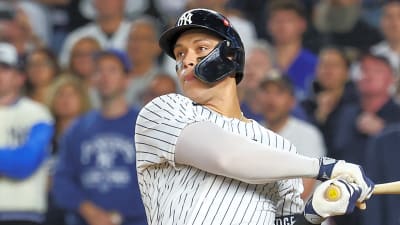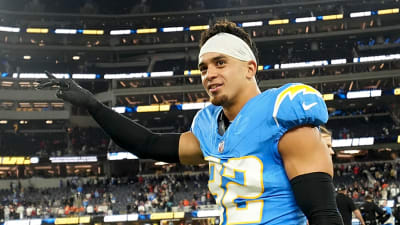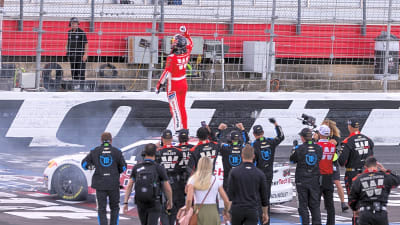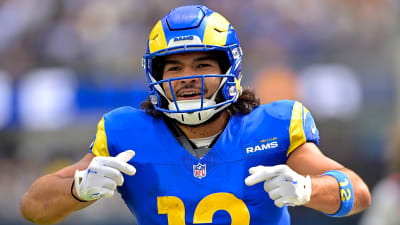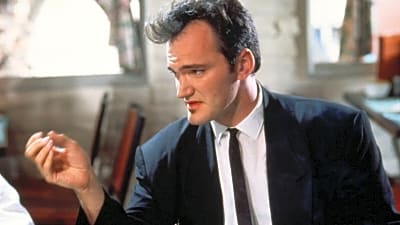
Well, after a one-week reprieve, the Miami Dolphins are back in the loss column. The team’s 27-24 loss to the Carolina Panthers on Sunday dropped it to 1-4 on the season.
This one was especially frustrating because the Dolphins jumped out to a 17-point lead against a Panthers team that is far less talented than Miami on paper. However, football games aren’t played on paper, and this contest was an excellent example of that.
Like always, we’re digging into the tape to see what went wrong with the Dolphins on both sides of the ball.
Miami’s Declining Run Defense
The Dolphins’ defense is one of the league’s worst units through five weeks, and it put up an especially brutal performance against the Panthers’ running game on Sunday.
Carolina posted 239 yards on 32 carries, an average of 7.5 yards per attempt. Unlike the Jets, there was no scrambling quarterback to burn them for big plays. Instead, it was Rico Dowdle who went for 206 yards on his own.
How did this happen? Honestly, the Dolphins just got blown off the ball a lot.
— Dante Collinelli (@DanteCollinelli) October 6, 2025
On this one, watch Zach Sieler get collapsed, Jaelan Phillips get kicked out, and Rasul Douglas get walled by a receiver. Jordyn Brooks kinda beats his block but can’t get a hand on Dowdle. He goes untouched for about 10 yards.
— Dante Collinelli (@DanteCollinelli) October 6, 2025
Even when Miami did get some hands on Dowdle, it couldn’t bring him down. In the clip above, Sieler wins his rep this time, forcing Dowdle to bounce the run a bit. Kenneth Grant is in position to make a tackle, but can’t; Brooks overruns the play, and then Ashtyn Davis gets run through.
Miami’s defense allowed 1.31 yards before contact on Sunday, its lowest of the season. However, it also allowed 6.16 yards after contact, its highest of the season.
That’s the worst mark for the Dolphins since a 2016 contest against the Pittsburgh Steelers.
— Dante Collinelli (@DanteCollinelli) October 6, 2025
While it’s easy to blame the defensive line, and it deserves plenty of blame, the other levels of the defense didn’t play well either. Watch the angle Jack Jones tries to take on this explosive run to open the second half.
— Dante Collinelli (@DanteCollinelli) October 6, 2025
Here’s another instance where Dowdle could have been stopped for an 8- or 10-yard run that turned into a significant explosive play.
Miami is soft — there’s no other way to put it. Carolina bullied them at all three levels Sunday, leading an incredible performance for Dowdle and an embarrassing one for the Dolphins.
The Dolphins’ Putrid Rushing Attack
On the flip side, the Dolphins ran for a whopping 19 yards on 14 carries against the Panthers, their worst mark since a 2015 contest against the New England Patriots.
The tape from this week felt a lot like the 2024 running game tape. The offensive line had its fair share of issues, but there were a lot of missed blocks by perimeter players.
— Dante Collinelli (@DanteCollinelli) October 6, 2025
Watch Nick Westbrook-Ikhine whiff on his block coming across the formation. Nic Scourton gets a free run at De’Von Achane, who probably could’ve made a better read and tried to bounce this outside.
Either way, the OL did its job on this rep, and it ends up a run for no gain.
— Dante Collinelli (@DanteCollinelli) October 6, 2025
This one is on the offensive line, though. Pay attention to how Jonah Savaiinaea comes out of his stance. He trips a bit, causing him to miss the safety, who shoots the gap and makes the tackle for little gain.
— Dante Collinelli (@DanteCollinelli) October 6, 2025
Here’s an Ollie Gordon II rep where we see all three issues pop up. Patrick Paul gets stacked and shed by Derrick Brown, who was unbelievable on Sunday. Julian Hill gets beat by the safety, and I’d argue Gordon could’ve cut this back based on reading the outside blocks.
The entire left side of the line collapsed into the backfield, and Gordon wanted to follow his fullback, Alec Ingold, to a bit of a fault.
A successful running game, especially in Miami’s heavy outside-zone scheme, is about attention to detail. All it takes is one false step or missed block by a skill player to blow a play up.
The Dolphins’ attention to detail on Sunday was not up to par, and the Panthers made them pay for it.
Miami’s Disappearing Passing Game
I’ll be honest, I don’t know what to make of the Dolphins’ passing game from Sunday. On paper, the numbers look fine.
Tua Tagovailoa was efficient, completing 75% of his passes for 229 yards, three touchdowns, and zero turnovers. And the tape is actually pretty solid. Tua had several big-time throws and didn’t have any turnover-worthy plays, according to PFF. That held up on my watch, too.
The prevailing narrative from this game is that Miami’s passing game sputtered because Carolina clogged the middle of the field. Setting aside the fact that it has been a consistent issue for the Dolphins since 2022, Carolina’s defensive game plan wasn’t even special.
The Panthers are a primary Cover-3 defense, and that’s what they ran against Miami. Carolina ran 37.7 reps of its reps in Cover-3, but made a big increase in Cover-6, a combination of Cover-2 and Cover-4.
The Panthers ran this a lot to roll coverage toward Jaylen Waddle, allowing Miami to hit this seam ball to Darren Waller early in the game.
— Dante Collinelli (@DanteCollinelli) October 6, 2025
Watch the safety at the top of the screen bail out to his deep half. That leaves the middle of the field wide open for a vertical threat, not a bang post or big slant — an actual vertical threat with some size.
Here’s the problem, though. Waller is on a pitch count. He played 32 snaps in the game but just four in the third quarter before playing 10 in the fourth.
So, Miami’s passing game fell apart because Waller’s usage fell off, right? I mean, the unit’s only second-half touchdown did come out of 13 personnel (one back, three tight ends).
I’m so salty this play didn’t end up the game winner. 13 personnel, hard PA fake to a big back, Waller’s motion could indicate he’s a blocker. Waddle runs right by his guy who falls for the fake. It’s everything I’ve ever asked for. pic.twitter.com/bx7tjEf2gR
— Dante Collinelli (@DanteCollinelli) October 6, 2025
Unfortunately, it’s not that simple. The passing game’s biggest issue Sunday was that its margin for error was basically zero. There was no threat of a running game, as we covered in the previous section.
The team was missing its best playmaker in Tyreek Hill, the offensive line continues to struggle in pass protection, and everything from the play-calling to the personnel limits what plays are available to the Dolphins.
Then, you have situations like Cole Strange’s holding penalty in the third quarter. That erased an in-breaking, first-down catch to Waddle to start the drive. How different would we view things if Miami had scored on that possession?
Tua will get a lot of blame for the game’s final sequence, which he deserves a bit of. He definitely missed Waddle because he tried to look off the underneath defender and didn’t reset his feet.
— Dante Collinelli (@DanteCollinelli) October 6, 2025
Then, he took a sack on a play where you can’t take one of those. However, the Dolphins ran a mesh concept into zone coverage, so that’s not an ideal play call.
The passing game or passing game play-calling wasn’t abysmal Sunday. Imperfect? Yes, of course.
But when you can’t run the ball, can’t pass protect for more than two seconds, can’t create outside of structure, or figure out how to attack outside the numbers besides throwing checkdowns, the imperfections get amplified.
This is not to remove blame from anyone — it’s to say that everyone deserves a share of the blame.
More must-reads:
- Fantasy football takeaways from Week 5: Stefon Diggs joins the elites
- Dolphins HC Mike McDaniel's latest admission should cost him his job
- The 'Active multiple 140-receiving-yard games' quiz
Breaking News
Trending News
Customize Your Newsletter
 +
+
Get the latest news and rumors, customized to your favorite sports and teams. Emailed daily. Always free!

